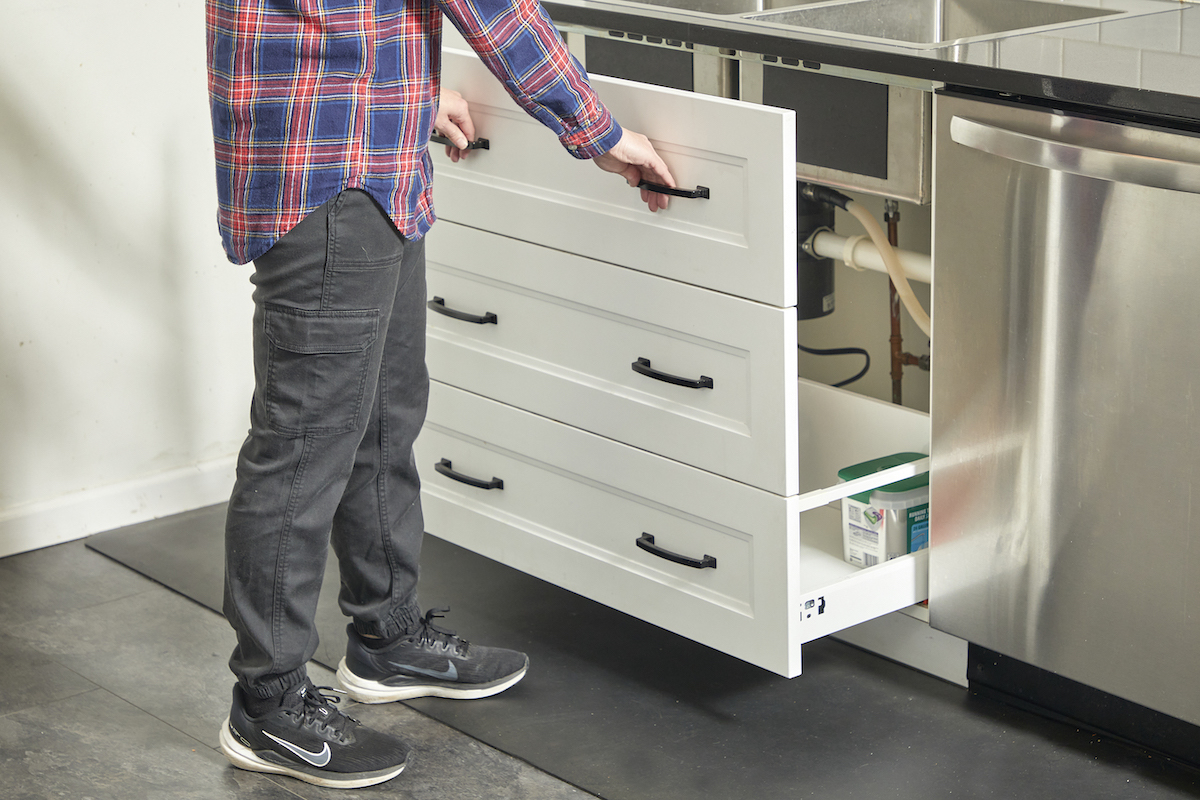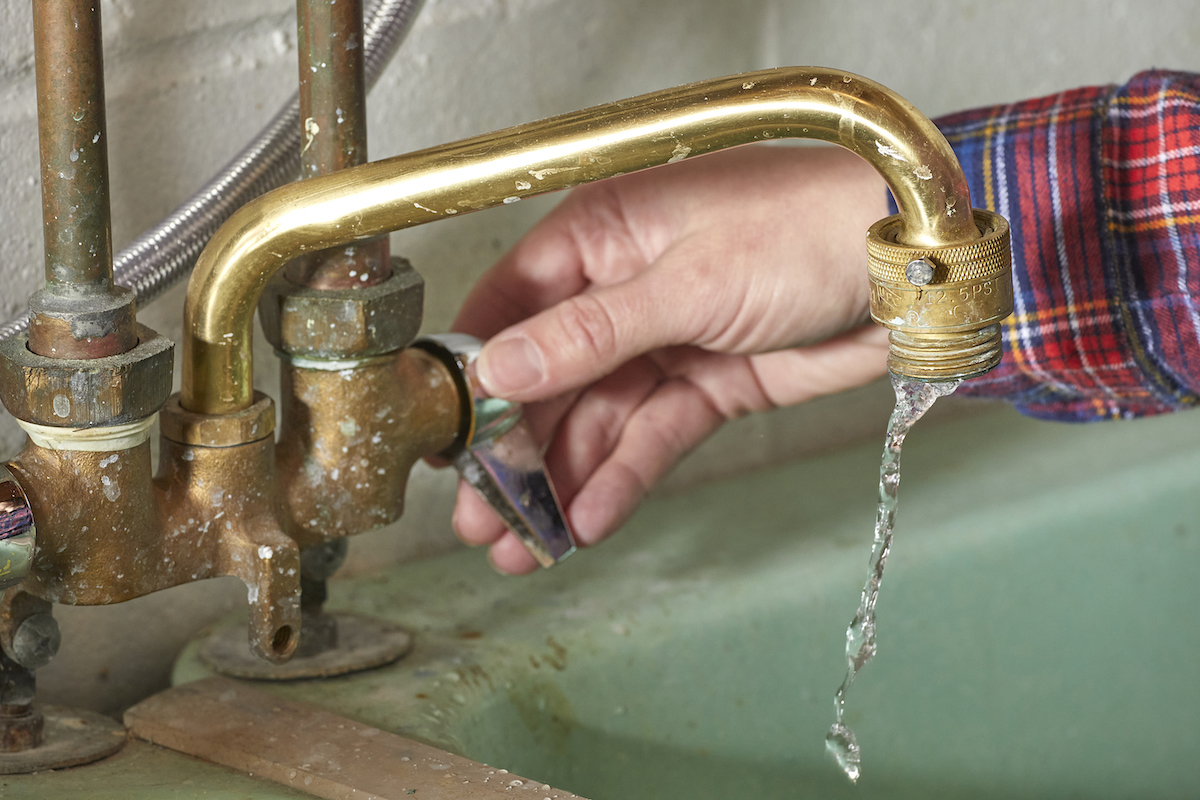We may earn revenue from the products available on this page and participate in affiliate programs. Learn More ›
When severe winter weather threatens your home, one of the most important preventative measures you need to familiarize yourself with is how to keep pipes from freezing. Frozen pipes can crack or burst, and the resulting leaks can cost a fortune in repairs. That’s why the best time to winterize pipes is before outdoor temperatures drop below freezing.
To keep bad weather from freezing pipes and avoid a plumbing headache, refer to the below info on how to protect pipes from freezing in the first place—as well as some helpful tips on how to thaw frozen pipes in a pinch.
What Happens if Your Pipes Freeze?
Water expands as it freezes, and this process occurs in your plumbing when temperatures drop below 32 degrees Fahrenheit. Expanding ice puts pressure on both plastic and metal pipes until they cannot hold any longer, at which point they fail. Frozen water pipes that have cracked not only need to be replaced but, if they burst indoors, they can result in serious water damage within hours of thawing. In addition to opening the door for mold and mildew growth, leaks in cabinets, walls, and floors can cost homeowners thousands in cleanup and repairs.
The types of pipes most susceptible to freezing include outdoor spigots, swimming pool supply lines, and water sprinkler lines, but indoor pipes aren’t necessarily safe. Indoor plumbing in unheated areas—basements, crawl spaces, attics, garages, exterior walls, or even kitchen cabinets—isn’t well protected against freezing temperatures, either.
How to Prevent Frozen Pipes
Seasonal water damage to your home can be avoided altogether if you follow these tips on how to prevent pipes from freezing.
Know your pipes’ and shut-off valve’s locations, and do preventative maintenance.

Frozen pipe prevention and prep begins with identifying where your plumbing leads throughout the home and locating your main water shut-off valve. (The exact spot may vary depending on the age of your house, but likely locations are the garage, basement, laundry room, or yard.) Each year, it’s recommended to have your plumbing and heating systems serviced by pros so you can stay on top of small problems before they turn into larger issues during a freeze.
Drain outdoor water lines annually.

Winterizing your home and landscape is crucial when determining how to keep outdoor water pipes from freezing. Each fall, homeowners should completely drain any outdoor water lines to swimming pools and sprinkler systems, and disconnect and drain hoses and close valves on outdoor hose bibs.
Despite the chemical’s name, you should never put antifreeze in outdoor water supply lines. Antifreeze does not prevent frozen pipes, and it’s potentially harmful to your landscape, children, pets, and wildlife.
Insulate at-risk pipes and under-insulated areas of the home.

Pipes in unheated exterior walls, basements, crawl spaces, and garages should be insulated with rubber, fiberglass, or foam pipe insulation. Along with the best pipe insulation to prevent freezing you can find, properly insulating rooms and addressing gaps in drafty windows should also help to keep your indoor plumbing at or above the minimum temperature to keep pipes from freezing.
Turn on faucets ahead of, and during, freezing weather.

If you know that a cold snap is headed your way, leave a couple of faucets running at a trickle in the coldest areas of the house (where pipes would most likely freeze). This age-old trick is effective since the water flow can prevent pipes freezing.
Keep your house extra warm when temperatures are at or below freezing.
Never completely turn off the heat on days or nights that dip below freezing, even if you’re out of town. Shutting down your HVAC system could put your pipes at a much greater risk of freezing—and even bursting—and the water damage you return home to could be extensive.
Leave sink cabinet doors open to warm indoor pipes.

Open the cabinet doors under kitchen and bathroom sinks to expose cold pipes to warm air. To that end, be careful not to close off any indoor pipes from heat in cold areas of the home. During the coldest times of the year, plugging in space heaters to run on a low setting in these problem areas doesn’t hurt, either.
Install a hot water recirculating pump.
A hot water circulating pump monitors a plumbing system’s water temperature. Connecting to the house’s hot water heater, this device automatically circulates warm water through the hot and cold water lines whenever temperatures drop below a predetermined benchmark. This device saves you from having to address particularly cold sections of indoor plumbing on your own.
Get a freeze alarm so you’ll have time to take measures before pipes freeze.

Consider also installing a freeze alarm, and set it so that it sends an alert to your phone when indoor temperatures drop below 45 degrees Fahrenheit. This will provide you with more time to warm areas at high risk of frozen pipes.
How to Thaw Frozen Pipes
If your best efforts to keep pipes from freezing weren’t enough to combat the cold, don’t panic: These instructions on how to thaw frozen pipes will help minimize (or avoid) any water damage. Should you discover one or more burst pipes as you are thawing, turn off your water main and call a plumber.
STEP 1: Locate the frozen pipe(s).
If you suspect one or more of your pipes has frozen, fully open your home’s faucets one by one. If any of the spigots produces just a small trickle of water, it is a sign of frozen plumbing.
STEP 2: Keep the affected faucet(s) open.

Unless you’ve spotted a burst pipe, keep any faucet that runs at a trickle turned on. This will help melt the ice in the pipe while you continue to work on thawing it from the outside.
STEP 3: Apply heat to frozen sections of pipe.

For exposed plumbing that has frozen, there are several approaches to the matter of how to thaw frozen pipes. These heating methods—none of which involve an open flame—include:
- Wrapping frozen pipe sections with an electric heating pad
- Safely positioning (and, if needed, repositioning) a portable space heater near frozen pipes
- Blanketing pipes in hot water-soaked towels, reheating and rotating them out as needed
- Using a hair dryer set to its highest heat setting on frozen pipe sections
If your frozen pipes are in an enclosed space or behind walls, calling a plumber is highly recommended. If a professional service call is not an option, one thing you can do that might help thaw indoor pipes is to turn up your home’s thermostat. It can’t hurt! Otherwise, it’s time to let a pro diagnose and fix any frozen pipes.
Final Thoughts
Knowing how to keep pipes from freezing is a bulwark against some of the worst damage cold weather can inflict against a home. It’s unique in that it involves a mix of regular home winterization, such as draining outdoor pipes, and on-the-fly adjustments, like leaving faucets running at a trickle, that can only be made once you know a freeze is approaching. Even the most cautious preventative maintenance guru out there isn’t immune to an occasional frozen pipe or fixture, so it’s just as important to also understand how to thaw frozen pipes in case those best-laid plans freeze over.


